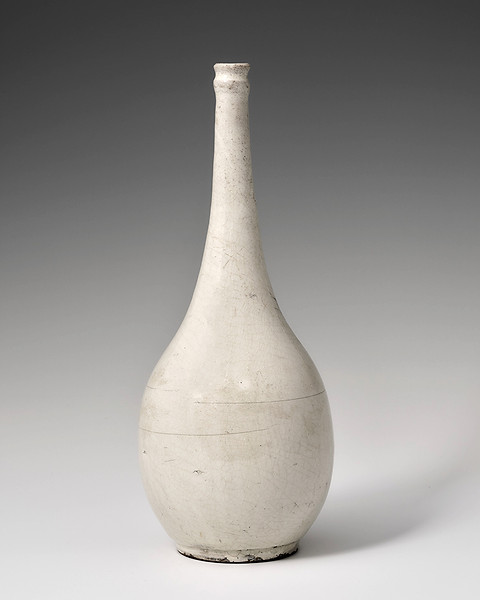
A Zhangzhou Bottle Vase
Qing Dynasty, 18th c., China
Height: 28.3cm
Based on a Persian bottle form from the 9th-10th century, this elegant bottle vase has a pear-shaped base the rises to a long neck, which is finished with two ridges at the mouth, reminiscent of earlier flask forms. The grey stoneware body is covered with slip and finally with a translucent glaze, a style known as “kohiki-type” in Japan.
The foot rim is unglazed, revealing a grey stoneware body fired to a dark russet brown color on the exterior. From the Zhangzhou kilns in Fujian Province, China. This kiln often produced for export, formerly referred to as Swathow Wares. The form of this example appears in Japanese kilns in the Hizen area in the second half of the middle Edo period, which were likely influence by Chinese imports.
A slightly more truncated version appears in the Longquan kilns in the Yuan period. See “Celadons from the Longquan Kilns” Beijing 1998. Pl. 159.
Provenance: Collection of a U. S. Military Officer stationed in Asia during the 1940’s -early 1950’s, and thus by decent in family
%20copy_edited.jpg)
%20copy_edited.jpg)